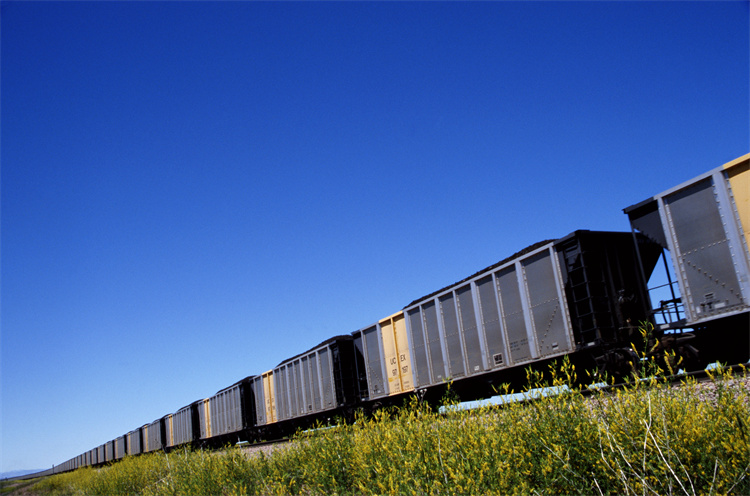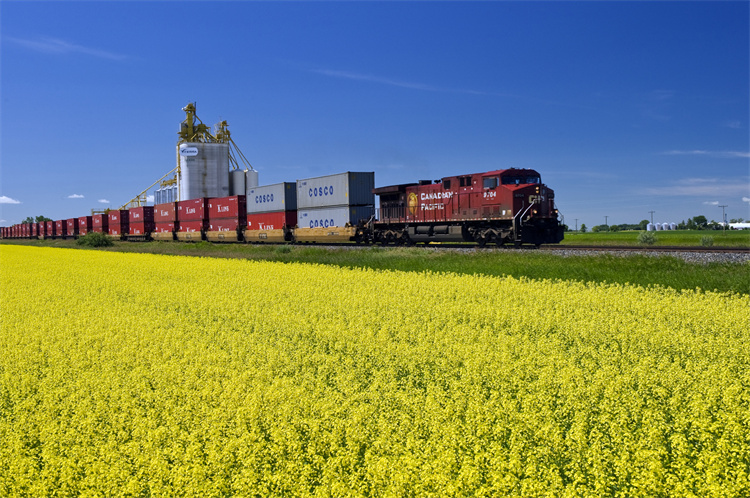The Future of Rail Transport: Insights from the China-Europe Railway

Rail transport plays a crucial role in global logistics, offering efficient and sustainable solutions for moving goods. The China-Europe Railway has emerged as a pivotal development, revolutionizing trade between Asia and Europe. Understanding the future of rail transport is essential for businesses and policymakers to capitalize on emerging opportunities and navigate potential challenges.
Current State of Rail Transport
Global Rail Transport Overview
Key Statistics and Figures
Global rail transport has experienced significant growth. The market size in 2021 reached impressive figures and is projected to expand further by 2030. The expected compound annual growth rate between 2024 and 2030 highlights the sector's robust potential. Factors contributing to this growth include a growing global population, increasing urbanization, and a rising need for cleaner and faster modes of transportation. Economic growth also plays a crucial role in driving demand for rail infrastructure.
Major Players in the Industry
Several key players dominate the global rail transport industry. Companies like China Railway Corporation, Deutsche Bahn, and Indian Railways lead the market. These organizations invest heavily in expanding and modernizing their rail networks. Their efforts ensure efficient and reliable services for both freight and passenger transport. Local regulations and vehicle emissions standards govern the usage of rail infrastructure in different regions. This regulatory environment influences the operations and strategies of major industry players.
The China-Europe Railway Initiative
Background and Development
The China-Europe Railway Initiative represents a groundbreaking development in international rail transport. Launched as part of China's Belt and Road Initiative, this railway network aims to enhance trade connectivity between Asia and Europe. The initiative started with a few pilot routes and has since expanded significantly. The development of this network involves substantial investments in rail infrastructure and technology.
Key Routes and Destinations
The China-Europe Railway features several key routes connecting major cities across Eurasia. Prominent routes include the Chongqing-Duisburg line and the Yiwu-Madrid line. These routes facilitate efficient cargo movement between China and various European destinations. The extensive coverage of these routes ensures seamless integration with other modes of transport. This integration provides smooth and efficient cargo transfers across over 30 countries.
Economic and Trade Impacts
The economic and trade impacts of the China-Europe Railway are profound. This railway network has revolutionized trade between Asia and Europe. Businesses benefit from reduced transit times and lower transportation costs. The railway route is three times faster than traditional sea routes, with a transit time of five to seven days. The China-Europe Railway Express contributes to stabilizing global supply chains by offering efficient rail services. The initiative's high efficiency, low costs, and low carbon emissions make it desirable for businesses looking to optimize their logistics operations.
Technological Advancements in Rail Transport

Innovations in Rail Infrastructure
High-Speed Rail Developments
High-speed rail developments have transformed the landscape of rail transport. Countries like China and Japan lead in high-speed rail technology. These countries invest heavily in infrastructure to support faster trains. High-speed rail reduces travel time significantly. Passengers can travel long distances quickly and comfortably. The Journal of Regional Science reports that high-speed rail arrival leads to a 44% increase in collaborative patent innovation. This innovation improves the quality of rail systems. High-speed rail also boosts economic growth by connecting major cities efficiently.
Smart Rail Systems
Smart rail systems represent another significant advancement. These systems use advanced technologies like IoT and big data. Rail operators can monitor and manage rail networks in real-time. Smart rail systems improve safety and efficiency. Sensors track train positions and conditions continuously. Operators receive alerts for any issues, allowing quick responses. Smart rail systems also optimize energy usage. This optimization reduces operational costs and environmental impact. The integration of these technologies ensures smooth and reliable rail services.
Environmental and Sustainability Efforts
Green Technologies in Rail Transport
Green technologies play a crucial role in modern rail transport. Rail companies adopt eco-friendly practices to reduce environmental impact. Electric trains replace diesel-powered ones, cutting emissions drastically. Solar panels and wind turbines power some rail stations. These renewable energy sources provide clean power for operations. Rail companies also use energy-efficient materials in construction. Lightweight and durable materials reduce energy consumption. Green technologies make rail transport a sustainable option for the future.
Reducing Carbon Footprint
Reducing carbon footprint remains a priority for the rail industry. Rail transport already has a lower carbon footprint compared to road and air transport. Companies strive to make it even lower. Energy-efficient trains consume less fuel. Advanced braking systems regenerate energy, further reducing consumption. Rail operators also focus on optimizing routes. Efficient routing minimizes unnecessary travel and energy use. The Economic Rationale for Rail Transportation highlights the benefits of rail transport, including energy efficiency and safety. These efforts contribute to a greener and more sustainable transportation system.
Economic and Social Impacts

Boosting Trade and Commerce
Case Studies of Economic Benefits
Rail transport has significantly boosted trade and commerce between Asia and Europe. The China-Europe Railway has reduced transit times and transportation costs, making it an attractive option for businesses. For example, the Chongqing-Duisburg route has facilitated faster delivery of goods, leading to increased trade volumes. Companies have reported substantial cost savings and improved supply chain efficiency.
The railway network has also accelerated industrialization and economic development. Rail transport consumes less energy per ton-kilometer than road transportation, making it a more sustainable option. This efficiency has attracted investments in rail infrastructure, further driving economic growth. The multiplier effects on industrial activities have created new job opportunities and stimulated local economies.
Impact on Local Economies
The China-Europe Railway has had a profound impact on local economies along its routes. Cities like Yiwu and Duisburg have become major logistics hubs, attracting businesses and creating employment opportunities. The increased connectivity has led to the development of new industries and services, boosting local economies.
The railway network has also promoted regional development by connecting remote areas to major economic centers. This connectivity has facilitated the movement of goods and people, enhancing economic activities in previously underserved regions. Local businesses have benefited from improved access to markets, leading to increased sales and revenue.
Social and Cultural Exchange
Enhancing Connectivity
The China-Europe Railway has enhanced connectivity between Asia and Europe, fostering social and cultural exchange. The railway network has made it easier for people to travel between the two continents, promoting tourism and cultural interactions. Travelers can now experience different cultures and traditions, enriching their understanding of diverse societies.
Improved connectivity has also facilitated educational exchanges and collaborations. Students and researchers can travel more easily for academic purposes, leading to increased knowledge sharing and innovation. The railway network has enabled universities and research institutions to collaborate on joint projects, advancing scientific and technological progress.
Promoting Cultural Understanding
The China-Europe Railway has played a crucial role in promoting cultural understanding between Asia and Europe. The increased movement of people and goods has led to greater exposure to different cultures and lifestyles. Businesses and individuals have developed a deeper appreciation for cultural diversity, fostering mutual respect and cooperation.
Cultural exchange programs have flourished with the enhanced connectivity provided by the railway network. Artists, musicians, and performers can now travel more easily to participate in cultural events and festivals. These interactions have enriched the cultural landscape of both continents, promoting a sense of global community.
Future of Rail Transport
Emerging Markets and Opportunities
Potential New Routes
The future of rail transport will see the development of new routes. These routes will connect emerging markets in Asia, Africa, and South America. The expansion will enhance global trade and economic growth. New rail corridors will reduce transit times and costs. Businesses will benefit from faster and more efficient logistics solutions. The China-Europe Railway will serve as a model for these new routes. The success of the China-Europe Railway will inspire similar projects worldwide.
Investment and Funding Trends
Investment in rail transport will increase significantly. Governments and private investors will recognize the potential of rail infrastructure. Funding will focus on modernizing existing networks and building new ones. Advanced technologies will attract substantial investments. Big data, IoT, and cloud platforms will revolutionize rail operations. Investors will prioritize sustainable and eco-friendly projects. Green technologies will receive significant funding. The future of rail transport will depend on continuous investment and innovation.
Challenges and Solutions
Addressing Infrastructure Gaps
Infrastructure gaps pose a significant challenge to the future of rail transport. Many regions lack adequate rail networks. Governments must invest in building and upgrading rail infrastructure. Public-private partnerships will play a crucial role. Collaboration between stakeholders will ensure efficient resource allocation. Advanced construction techniques will expedite infrastructure development. High-speed rail and smart rail systems will address capacity issues. Efficient infrastructure will support growing demand for rail transport.
Overcoming Regulatory Hurdles
Regulatory hurdles hinder the expansion of rail transport. Different countries have varying regulations and standards. Harmonizing these regulations will facilitate cross-border rail operations. International cooperation will be essential. Governments must work together to create uniform standards. Simplifying customs procedures will reduce delays. Streamlined regulations will enhance the efficiency of rail transport. Overcoming regulatory challenges will unlock the full potential of rail networks.
The China-Europe Railway has revolutionized trade between Asia and Europe. The railway's efficiency, reduced transit times, and lower costs have significantly boosted global supply chains. Future trends in rail transport include the development of new routes, increased investment, and technological advancements. Continued innovation and investment will drive sustained growth in the rail infrastructure market. Key players must focus on eco-friendly practices and advanced technologies to meet rising consumer demand for sustainable solutions. The future of rail transport promises enhanced connectivity, economic growth, and environmental sustainability.
See Also
Exploring the Evolution of Less-Than-Truckload Freight Technology
Ready for the Latest in Supply Chain Transport Tech?
Prepared for the Transport Technology Revolution Ahead?
Navigating Future Logistics Through Digital Innovation
Exploring the Future Through Logistics Technology Advancements
